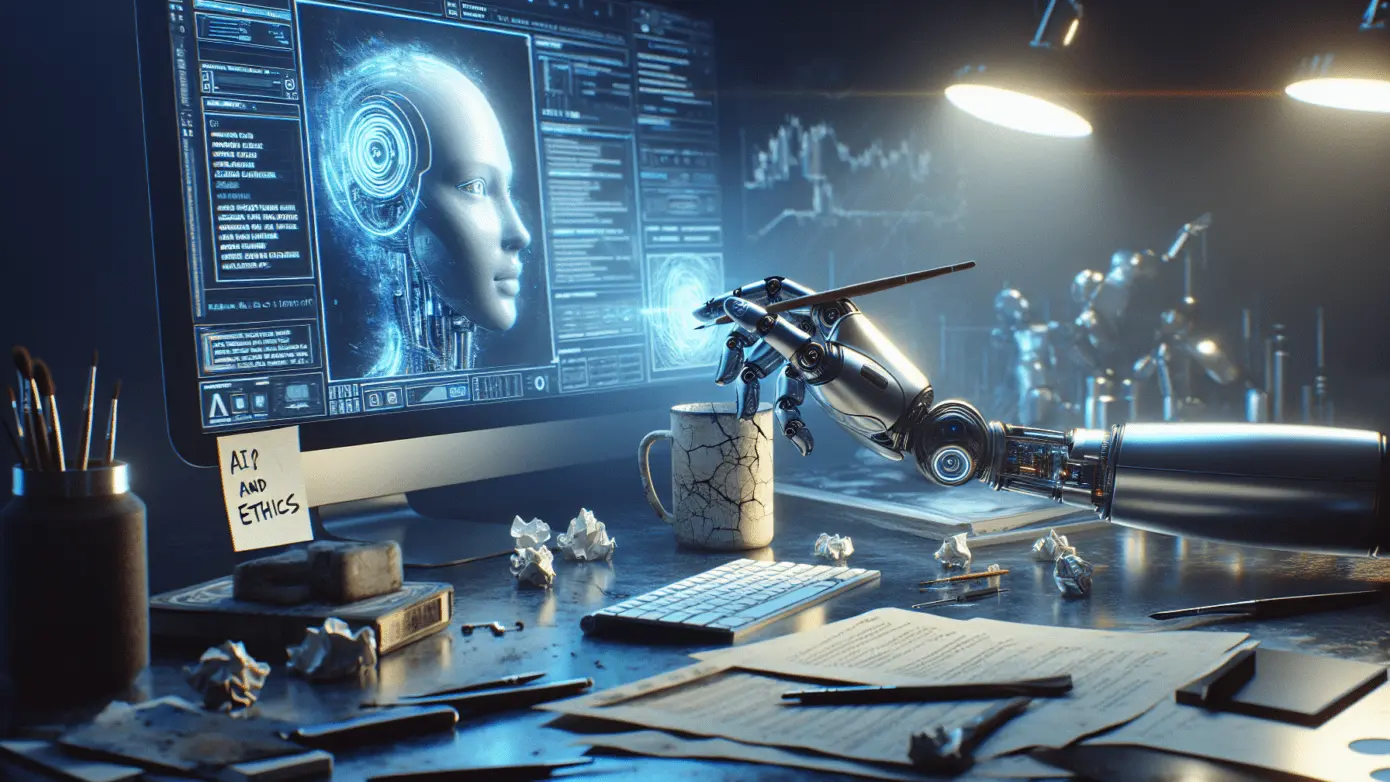Introduction
What are AI image generators? As the name hints, they are tools that use AI to create images. But how do they function exactly? The main force behind such a tool is Machine Learning.
There are various types of AI image generators – all designed with a unique aim in mind. Some aim to paint portraits, others focus on scenery or abstract art. Regardless of their focus, they need one common and vital element: Neural networks.
A neural network is a series of algorithms that help the machine learn from the data it processes. In this case, the AI learns from a plethora of images. It tries to replicate the patterns and styles it picks up from these images. The end result? An AI generated image.
This is an amazing advancement, but it does raise some ethical questions. It’s wise to tackle these issues head on, ensuring a balanced and fair use of such technology.
Remember to always think about the ethical implications of using AI-generated images, just as you enjoy the art it creates.
How AI image generators create art
AI can make art that wows us! How? With AI image generators. They quickly create images. This saves time and boosts work rate. That means we can make more in less time. Cool, yes?
AIs can also make art that’s unique and personal. With so many styles, AI can create whatever you fancy. This way, AI gives each image a special touch.
AI art even has real-life uses. Check online ads or games. Those cool, fun images? AI made!
But making AI art is not all fun. There are some thorny issues to consider, like data privacy and potential bias. Experts suggest taking a savvy approach. This way, AI art remains fun, without the stress of tricky issues.
The best part? Optimized AI images can improve your website’s visibility on search engines. Good for artists and good for marketers!
Looking to the future, AI image generators offer exciting new paths, sparking debates on their impact on human art. Yes, the coming years seem packed with promise for AI art!
So, with caution and great expectations, let’s explore this brave, new world of AI-made artistry. Remember, there’s so much to discover, so much to create. In the end, isn’t that why we make art: to explore, to create, to discover? Let’s see how AI can help us do just that, but more efficiently, more creatively
How do AI image generators tackle ethics
AI image generators, they’re nifty tools. Yet, they pose unique ethical challenges. Is privacy a concern? Yes, absolutely. Much like your phone usage data, images used by AI can contain personal data. This info needs protection. Why? So it doesn’t fall into the wrong hands or get misused.
“How about biases?”, you ask. Answer: They’re a real issue. AI is only as fair and unbiased as the data it learns from. If input data is skewed, AI output will be too. So, bias-checks are a must while using AI image generators.
Misuse, it’s the elephant in the room. AI images can spread falsehoods and cause harm. This is a key ethical challenge we must tackle. So, what’s the takeaway? While AI image generators are tools of tomorrow, ethics can’t take a backseat. It’s important to use these tools responsibly.
Linking AI art with SEO practices
What’s the link between AI image creators and SEO? They’re intertwined. AI-generated imagery can give a boost to your SEO strategy. But it’s crucial to optimize these images for SEO.
Ever ponder how to lift your SEO game using AI-powered visuals? Here’s a tip: relevancy matters. Use AI to generate images that enhance your content’s story. This fits in snugly with the accuracy factor that SEO thrives on.
Now let’s turn attention to the ethical lens. Can ethics and AI mingle? Yes, keeping a cautious yet open approach helps here. Ethical roadblocks like data privacy and potential biases need inspection. Misuse is a possible pitfall in AI image generation.
So, while AI crafts art with uncanny ease, it needs ethical steering. It paves the way for vibrant SEO, but it requires ethical checks and balances along the way. The blend of art and ethics in AI is a budding field worth exploring.
The Legal Landscape of AI-Generated Images
Did you know there are copyright laws for AI-generated images? Much like tangible art, AI magic meets legal world. It’s a web of terms! With rules aplenty, texture in this world is rich.
Who holds the reins on AI-created masterpieces? You might think the AI, but it’s the human creator who calls the shots. They get rights to the art. But it’s not black and white, it’s a sea of gray.
What about the nitty-gritty details of these laws? They can be hard to grasp. Much like a hamster in a spinning wheel, we’re always learning. That’s the thrill and the challenge.
In essence, as we delve further into the world of AI, our understanding of its potential, its issues and its legal terrain will continue to evolve.
Future Horizons for AI Image Generators
In tomorrow’s world, new trends will emerge in AI image creation. The engines of change? AI image generators!
The promise is fascinating. Picture its power to make new art, stirring a debate. Will AI images replace human artists? That’s the million-dollar question!
Consider this. AI image generators bring exciting innovation. They might pave the way for trends we can’t even imagine right now. Now, that’s a thrilling thought!
However, this also sparks a clash of viewpoints. Some wonder if these image generators could surpass human artists. When creativity meets AI, who wins the race?
As we step into the future, the impact of AI on artistry will be an ongoing debate. Johannes Gutenberg’s printing press revolutionized the production of text. Now, AI holds the potential to revolutionize image creation. The same question swirls: Will the creation outweigh the creator?
Each stride in AI paints a new picture of the future. A future where art meets science. A future where creativity intertwines with technology. Filled with both promise and scrutiny, it’s a thrilling horizon to gaze upon.
And therein lies the strength of AI. It’s not just about what it can do. It’s about the questions it provokes. Questions that make us think, argue, dream, and anticipate.
Hold on tight, because one thing’s for sure: The landscape of image generation will never be the same again.



Leave a Reply